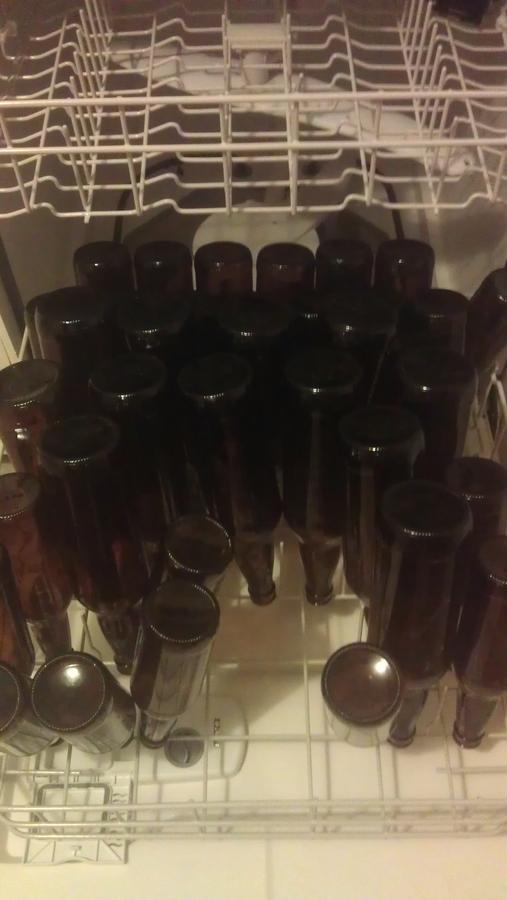Deisel asked about wthether a kit wort can be chilled less quickly than an All grain wort.
The short answer:
You chill fast to avoid producing DMS, to get clearer beer, and to prevent bacterial contamination.
Kits can come with Liquid Malt Extract (LME) or Dry Malt Extract (DME) or a combination of both.
LME doesn't have enough of the "stuff" to produce large amounts of DMS, and many of the haze causing proteins are removed in the manufacturing process, but there's still a risk of contamination when chilling slowly.
Dry Malt Extracts and All Grain have all of the above issues to contend with, so chill quickly..
Here's the technical answer, but I'll try my best to make it easy to understand the subtleties involved.
Chilling the wort quickly serves several purposes;
1) SMM (S-Methyl Methionine) is the precursor chemical to DMS (DiMethylSulfide). DMS tastes and smells like cooked corn or cabbage (or sometimes shellfish). It is produced naturally in the wort when the wort temp is above 140. It volatizes out during a rolling boil, and diminishes over time. Normally, SMM is pretty much depteted in a 90 minute boil. This is most important for beers with large amounts of Pilsner malt in them, as Pilsnerr malt is the least kilned and produces the most SMM. So, if you are using a boil less than 90 minutes, chilling quickly stops formation of SMM, which keeps it from turning into DMS later. Now, don't go covering the pot during the boil, or the SMM will condense on the lid and go right back into the wort. Keep it uncovered for best results.
2) Sanitization. Bacteria LOVE temps between 140 and 80F. Letting the beer slowly cool down allows microbes in the air to land in an open kettle, take root, and multiply as the wort cools.
There will nearly always be a low level of microbial content in your homebrew. Chilling down to pitching temps quickly allows the yeast to get a head start and the alcohol then tends to kill off any microbes.
3) Chilling quickly allows hazing proteins to flocculate (clump together) as the temp drops, where they come out of solution.
The faster the chilling action, the faster the clumping action. This is called cold break. Once cooled, you can whirlpool the wort to help build a pile of junk in the center, then cover it and let all the trub (pronounced 'troob') settle out. You can then siphon clear wort out of
the kettle into your fermenter, where you then aerate and proceed normally.
Now we move on to the manufacturing the forms of extract and how that changes things
Liquid Malt Extract goes through a short boil and cooling cycle when manufactured. This is enough to form both hot and cold break which is filtered out at the manufacturer. Hopped extract is no different, it simply has hops annd ususlly hop bitterness extract in there too. You will still get a small amount of hot and cold break using liquid extract, but it is much less than Dry Malt Extract and certainly less than All Grain. This means that less of the materials that produce SMM are present when you open the can, which reduces but not eliminates the need to chill quickly.
Dry malt extract usually does not go through a vigorous boil at the manufacturer. It is usually simply brought to pasteurization temps and then sprayed out in the presence of a vacuum chamber. This spraying causes the water to evaporate right out and the malt content falls to the floor as a solid, which is then fully dried. Since it never reached a boil, it stillhas all the protein content so all the considerations for chilling quickly that an AG batch goes through.
Steeping grains really don't count in this equation because
1) the starch is already converted so they are almost all sugar, color, and flavor compounds, not starch.
2) usually you are talking a lb or 2 in a 5 gallon batch, so that's a relatively small amount of grain anyways.
Whew!
Hope This Helps-











